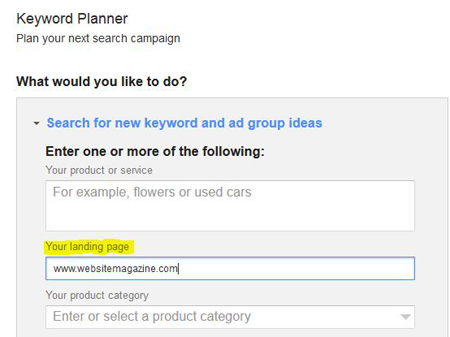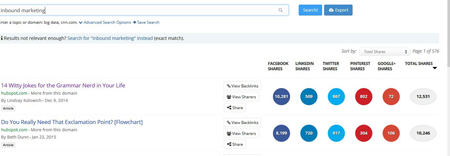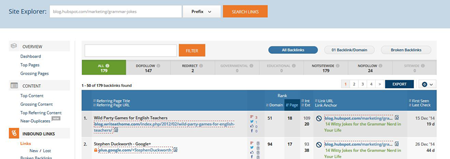60-Minute SEO: A Daily Planner

Many of you are familiar with the positive impact that SEO can have on your website and more importantly, on your ability to generate leads and sales online. While you can't deny the importance, many of you never get around to taking advantage of this great profit driver for one primary reason, you don't have time.
While keeping up with the latest happenings in SEO can be pretty time consuming and running a full-scale SEO campaign will definitely leave you short on time, here is a simple strategy you can implement right away, so you can improve your site's search presence.
If you are trying to rank for competitive terms and your competition is investing heavily in SEO, you are not going to outrank them with this strategy. If you are a local business with limited competition, you can rock the rankings with outreach link building.
In case you are not familiar, outreach link building includes a few tactics, each or which require you to reach out to another person and ask for a link in some fashion.
The most common methods for this are:
- Broken Link Building
- Asking to Be a Guest Blogger
- Sharing Your Content and Asking for a Link
Today we are going to talk about creating a piece of content and asking people to link to it, EFFECTIVELY! Let's jump right in.
Monday
The first thing you have to do is find keywords (KWs) that you want to rank for. These keywords are going to serve as the primary topic for your blog post and related KWs are also going to be a part of your blog post. Since our time is limited, look for keywords your competitors are using.
If you have a tool like SEMRush you can simply plug their URL in and see what terms they rank for and how much traffic each term sends them. Here is what that looks like.
If you don't have any paid keyword tools, the Keyword Planner from Google will also work. All you have to do is plug the URL of your competitor into the landing page box, here is what that looks like.

After using your preferred tool, make a list with the primary keyword you decide to target and 5-6 related keywords. You can also look for long-tail variations of your primary keywords.
Here is an example:
Primary Keyword: Link Building
Long Tail Keyword: Contextual Link Building Services
If you are still confused about how to find keywords, check out the Comprehensive Keyword Research Guide here on Website Magazine.
Tuesday
Now that you are equipped with some keywords that can serve as the main topic of your article, let's take a look at how to decide what angle to use when writing your post.
Buzzsumo is a great tool that really simplifies the process. In order to find the most popular content about your keywords, simply enter them into the tool and you will see the most shared content. As you can see below, we entered "inbound marketing" and a few hundred results were returned. Look through the first few pages until you see a common theme between popular articles, use that information to guide your own post. Remember, you are looking for popular themes but you need a unique angle if you want people to link to your post.
When you are going through the list of posts, make note of the URL of the ones serving as your inspiration for your own blog post, you will need them later.
Wednesday
Now that you have the keyword and a good idea of what will be a popular post about that keyword, it is time to write your post. When writing the post, pull up the list with your primary and secondary keywords on it and work them into the article when possible. You do not have to use them all in the article and if you need to use a variation of the keyword for the article to read better, don't hesitate to do so.
If you have a difficult time writing, trying asking your 4-5 questions and answering them. Once you have written your answers you can go back and fine tune the post. If you are really at a loss for how to write blog posts, The Content Marketing Institute has some great free resources you can look through.
If you are a slow writer, don't be afraid to spend one hour per day for a couple of days until you carve out a solid piece of content.
Thursday
Now that you have your masterpiece written and ready to go viral, it is time to find people who are likely to link to or share your new post. You can use Buzzsumo to find inbound links to articles, but I personally prefer to use Majestic SEO or AHREFs as they often return more links.
Open the list of URLS you made on Tuesday and plug them into whichever back link tool you use. Ahrefs is used in the example below.
When pulling the link profile be sure you are looking at links that point to the specific posts and not anywhere on the website, this will ensure better targeted outreach.
Make a list of all the sites linking back to the blog posts you listed on Tuesday. Once you have compiled a big list, merge them together in a spreadsheet and eliminate duplicates.
You could use a scraping tool to find contact emails for the sites linking to similar posts. Instead, I prefer to visit each site individually so you can eliminate any spam or low-quality sites. Add the Moz Bar to your browser for a quick way to find the domain/page authority of sites you may ask for a link, staying about a DA of 20 is best.
As you find sites that match your requirements, look for an email address and add it to a spreadsheet.
Friday
Now that it is Friday you probably want to take it easy. The only thing you have left to do is send out an email to the list you created on Thursday. Give a brief overview of the post and let the recipients know why you think they would be interested in linking or mentioning your new post.
Monday
On the following Monday, follow up with any emails you may have received in response to your link request and then get back to finding some new keywords and repeating the process.
What do you think?
Can you set aside 5 hours per week to grow your online presence? If not, get in touch below and we would be happy to give you a hand.












